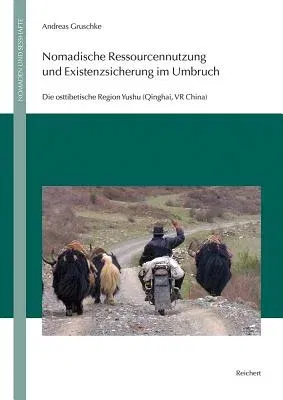English description: On the basis of a precis of available knowledge on
traditional nomadic ways of life and livelihoods on the Tibetan Plateau
this book presents an analysis of current conditions of livelihood
security in pastoralist areas. The example of the remote Eastern Tibetan
region of Yushu illustrates how nomadic societies in times of transition
use the resources at their disposal for securing their livelihood. This
predominantly rural district is an ecologically vulnerable and
economically marginal highland region within China's present-day Qinghai
Province. In case studies that were surveyed with qualitative and
quantitative methods, the basis for local livelihoods of pastoralist and
agro-pastoralist households was assessed. In this context the
extraordinary role of caterpillar fungus is elucidated - a resource that
is virtually unknown in the Western World but which is of vital
importance for Tibetan nomads in the plateau's Eastern half. The study
at hand discusses in which way resource-oriented operation schemes and
exogenous factors interact, thus defining the extent of livelihood
security, vulnerability and resilience of pastoral households, local
groups and the super-ordinate society in this part of the Tibetan
Plateau. German description: Das vorliegende Buch fasst das vorhandene
Wissen uber die nomadische Lebensweise im tibetischen Hochland zusammen
und verknupft dieses mit einer entwicklungstheoretisch angeleiteten
Analyse der heutigen Bedingungen nomadischer Existenzsicherung.
Ausgehend von der osttibetischen Region Yushu in Qinghai (China)
beschaftigt es sich mit der Frage, wie nomadische Gesellschaften in
Zeiten des Umbruchs die ihnen zur Verfugung stehenden Ressourcen zur
Existenzsicherung nutzen. In einer lange Zeit als besonders abgelegen
geltenden, okologisch problematischen und okonomisch randstandigen
Hochlandregion werden in qualitativ und quantitativ bewerteten
Fallstudien die Lebensgrundlagen nomadischer und seminomadischer
Haushalte untersucht. Dabei wird die einzigartige Rolle des
Raupenpilzes, einer im Westen haufig unbekannten, in tibetischen
Nomadengebieten jedoch enorm wichtigen Ressource, deutlich gemacht. Das
Buch erortert, in welcher Weise ressourcenbezogene Handlungsmuster und
exogene Faktoren zusammenwirken, um das Ausmass von Absicherung,
Verwundbarkeit und Resilienz von Haushalten, Gruppen und der
ubergeordneten Gesellschaft zu bestimmen.

